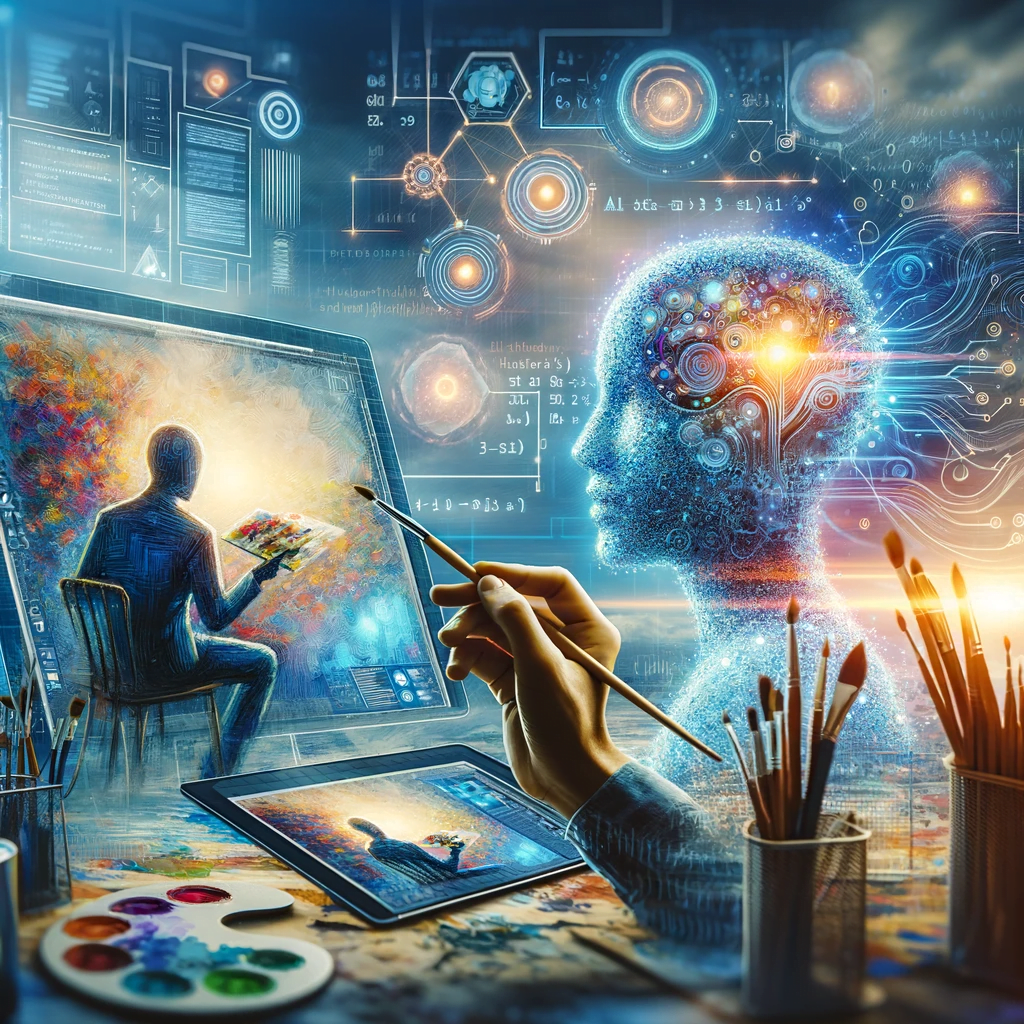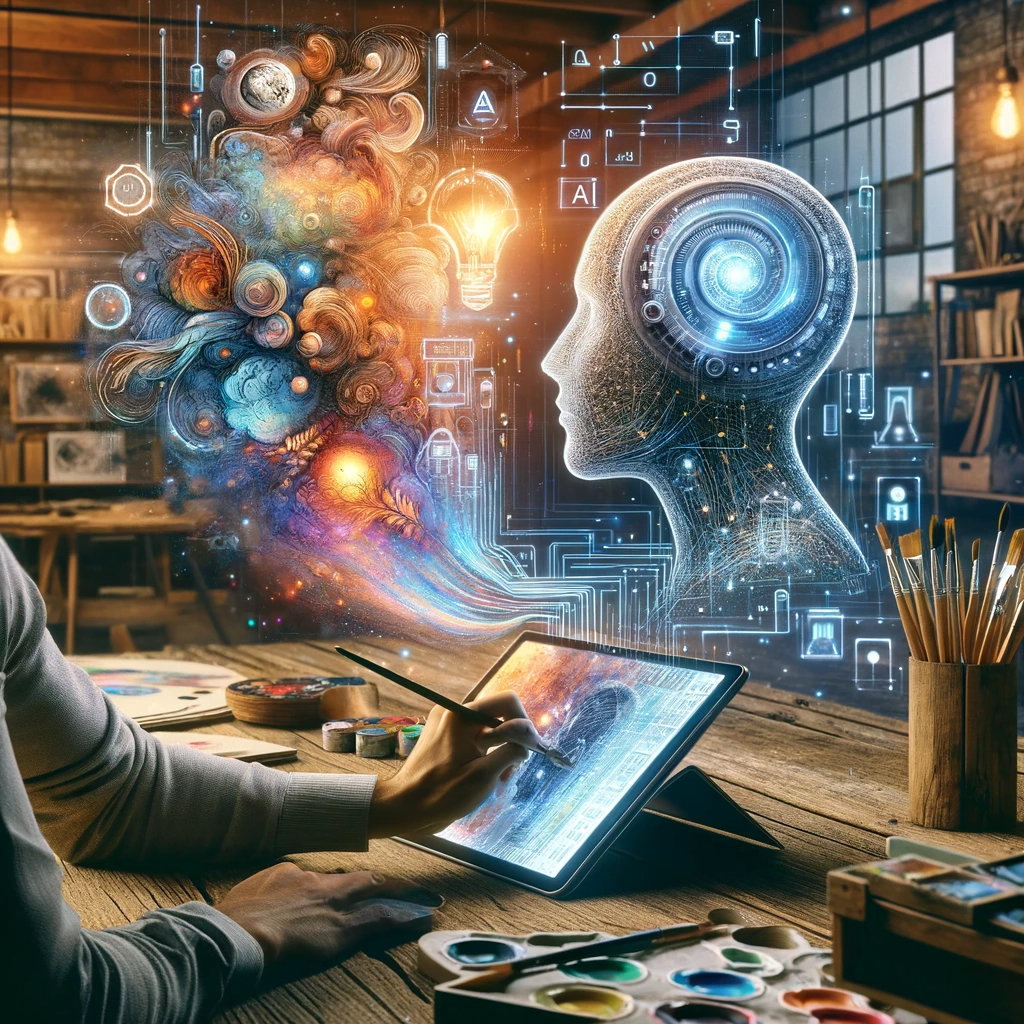As we enter a new era of technological innovation, the intersection between Artificial Intelligence in Image Generation and visual art is becoming increasingly prominent and fascinating.
This continuation of our previous article explores more deeply how AI is transforming the image generation, not only in terms of technology, but also in its impact on creative expression, ethics and educational development.
Join us on this exciting journey, where art meets the cutting edge of technological innovation, expanding the horizons of what is possible in the realm of digital creativity.
Table of Contents

The Integration of Artificial Intelligence in Image Generation in Contemporary Art
The integration of AI into contemporary art is a growing phenomenon.
Artists are using these tools to expand their creative expressions, creating works that combine human and computational elements.
This results in a new form of art, where the collaboration between the artist and the machine gives rise to unique and innovative pieces.
AI is also being used in art exhibitions and interactive installations, offering visitors immersive and personalized experiences.
The Role of Ethics in AI Image Generation
Ethics plays a crucial role for Artificial Intelligence in Image Generation.
As technology develops, questions arise about the authenticity and manipulation of images.
It is vital to establish ethical guidelines for the use of these technologies, ensuring that they are employed in a responsible and transparent manner.
Additionally, it is important to consider the impact of AI in the creative industry, ensuring that it complements and does not replace human creative work.
AI Education and Training for Artists and Designers
With the growing importance of AI in image generation, education and training in this area becomes essential for artists and designers.
Universities and art schools are beginning to incorporate courses that teach how to use Artificial Intelligence tools in Image Generation in creative processes.
These programs not only provide technical skills, but also address ethical and theoretical issues related to the use of AI in art.
AI and Visual Personalization
A remarkable aspect of AI image generation is its personalization capabilities.
With machine learning, AI can create images that adapt to individual preferences and tastes.
This has significant applications in marketing and advertising, where visual campaigns can be tailored to different audience segments, increasing the effectiveness and relevance of messages.
Technical Challenges and Future Innovations
Despite the advances, there are still technical challenges to be overcome, such as improving the interpretation of complex textual instructions and generating high-resolution images.
The future promises innovations such as improved interactivity of AI tools, allowing artists and designers to have more refined control over the creative process.
Furthermore, the integration of augmented and virtual reality with AI will open up new dimensions for digital and interactive art.

Conclusion
Artificial intelligence is redefining the boundaries of image creation, offering powerful tools that expand the reach of human creativity.
The fusion of art and AI technology is creating new forms of visual expression, opening doors to unprecedented innovations and immersive experiences.
However, along with these possibilities come ethical responsibilities and technical challenges that need to be addressed.
As we move forward, it is essential that we continue to explore the balance between human creativity and AI efficiency, ensuring that technology is used to enrich art and design, not replace unique human expression.
The future of AI imaging promises to not only transform how we create and interact with images, but also how we perceive and value art and creativity in an increasingly digitalized world.
